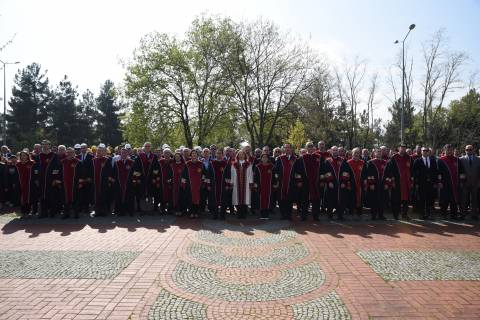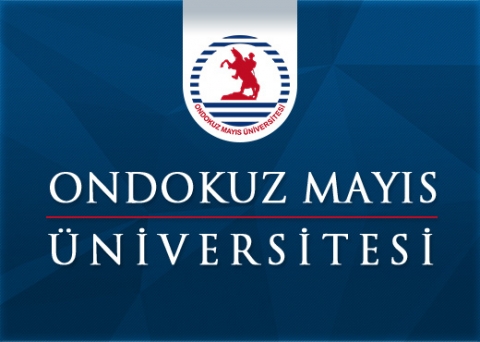Digital Technologies on the Rise in Agricultural Production
Prof. Dr. Eyüp Selim Köksal, a faculty member at the Department of Agricultural Construction and Irrigation of Ondokuz Mayıs University (OMU) Faculty of Agriculture, explained the benefits of the digital transformation in agriculture for nature and farmers engaged in production in Türkiye.
Prof. Dr. Eyüp Selim Köksal, who was part of the consulting team in the establishment process of the "TAGEM SuET" system of the General Directorate of Agricultural Research and Policies (TAGEM), stated that "economically capable farmers tend to use all digital technologies now."
"You can access information such as effective, sufficient, and timely water use from the available data."
Stating that digitalization in agriculture has emerged in Turkey and around the world in the last 5 to 10 years, Dr. Köksal said, "The process called digitalization in agriculture involves obtaining data from digital sources, transforming the data into information through accurate calculation methods, and organizing agricultural applications based on this information. These applications start from tillage, followed by seed planting, fertilization, weed and disease control, and production. We can talk about digitalization in agriculture when these stages are done according to the available information. If I give an example from my field, you should not overdo it in the irrigation stage. Therefore, you can access information such as using water effectively, sufficiently, and at the right time from the available data."
"UAVs have great benefits in spraying and fertilization as well."
Dr. Köksal, who spoke about how data is obtained and what kind of equipment is used in the process of digital agriculture, continued as follows:
"The starting point of digital technologies in agriculture is recording data. These data sources are meteorological results, sensors that provide information about soil and plants, satellite systems, and unmanned aerial vehicles (UAVs). Using sensors in large agricultural fields is not a recommended and preferred method. Data collection from large agricultural fields is mostly done with satellite systems. However, knowing what satellite images mean on the Earth's surface is necessary. At this point, the effectiveness of cameras attached to UAVs is very high. In other words, when we attach cameras to UAVs that can receive data equivalent to satellite data, we can scan the region properly by matching the images. After obtaining the data, we need tools and equipment to upload the data. Tractors can spray according to this data, and irrigation machines can irrigate according to this data. We implement this in practice. UAVs also have great benefits in spraying and fertilization."
"The Ministry of Agriculture and Forestry will also support the use of digital technologies in the future."
Referring to the fact that units that determine and manage general agricultural policies also benefit from this technology, Dr. Köksal stated that the Ministry of Agriculture and Forestry will support the use of digital technologies in the future.
"For example, the organizations under the Ministry of Agriculture and Forestry, irrigation unions, and cooperatives obtain significant data about the entire country or the regions they are responsible for when they benefit from these data. In addition, with the help of digital technologies in the fields where irrigation is managed, it is possible to track who irrigates how much. We worked on this system's research and development (R&D) between 2013 and 2015, and this technology is now ready. Moreover, predictive maps regarding fertilizer deficiencies can be developed, or the extent to which a disease affects a region can be monitored using these technologies. Policies, decisions, and support to be determined here directly affect the farmers. Farmers can use this technology. We, as TAGEM, have developed the 'TAGEM SuET' system, which is currently active. Our farmers can track how much irrigation they need on their fields using the TAGEM SuET system. Additionally, we have farmers who purchase drones or receive services from companies that own drones. These applications include data collection, data-to-information conversion, spraying, irrigation, and seed planting. Our farmers are inclined to benefit from all these applications. There used to be a perception in society that 'Farmers don't understand these technologies, they are obsessed with traditional agriculture,' but this perception has largely been broken. Economically capable farmers tend to use all digital technologies. This inclination of farmers has matured the decision of the Ministry of Agriculture and Forestry to support the use of digital technologies. We now understand that the Ministry of Agriculture and Forestry will provide support not only for seed, feed, and fuel but also for the use of digital technologies in the coming period."
"In Türkiye, 77% of irrigation resources and 60% of allocated water resources for agriculture are wasted."
In his speech, Dr. Köksal emphasized the increasing drought in some regions worldwide and pointed out that Türkiye has 28 million hectares of arable land. It is not possible to individually examine this vast land. However, satellite systems can be used to identify these 28 million hectares of land. When drought occurs, we can determine which areas are affected and to what extent. Additionally, we can identify the spatial and regional occurrence and severity of any potential diseases and harmful effects. There is no other solution in irrigation management. In Türkiye, 77% of irrigation resources and 60% of allocated water resources for agriculture are wasted. Despite transitioning to drip irrigation and sprinkler systems, we are not successfully managing water in the fields."
"We should track the water flow from the plant's leaf until it reaches the atmosphere."
Dr. Köksal emphasized that Türkiye is already at risk of drought regardless of global climate change, and he discussed how these risks could be mitigated:
"In Türkiye, the majority of agriculture is carried out in regions with arid and semi-arid climates, whether there is climate change or not. We are a country constantly struggling with drought, with or without climate change. So what can we do? First of all, we should use our controlled water resources much more effectively. Suppose approximately 50 billion cubic meters of water in our country is under control, and 80% of it is used in agriculture. In that case, this corresponds to 40 billion cubic meters; if 60% of it is wasted, that amount is equivalent to 24 billion cubic meters. Therefore, we must track the water that flows from dams, deep wells, and rivers to the fields with digital technologies, from the plant's leaf until it reaches the atmosphere. Only in this way can we combat drought. One of the most important activities to be carried out here is monitoring with digital technologies who uses how much water. Just as we measure the water we use in our homes with meters, we have an obligation to know how much water is consumed in each field and which system is used in agriculture. Since we cannot place a camera on every field, we will monitor this process with digital technologies."
What is the role of TAGEM SuET in agriculture?
Prof. Dr. Eyüp Selim Köksal, who is involved in the consultancy of the "Irrigation Management and Crop Water Consumption System" abbreviated as TAGEM SuET, explained that this system represents the first and most crucial step towards a domestic and national digital irrigation management system in our country. According to Dr. Köksal, "TAGEM SuET contains approximately 30 years of meteorological data that covers the whole of Turkey. Using this data, you can calculate when and how much water any plant in Turkey needs for irrigation. The system also allows you to determine how much water should be given to which crop in which region during the irrigation stage. Moreover, the system can answer questions such as when and how much water should be given, if there is enough water, or when and how much water will be needed if there is a water shortage. In addition, the system includes various processes necessary for capacity calculations during the planning phase of irrigation systems. Public institutions, municipalities, universities, irrigation cooperatives, and companies with irrigation systems use this system."



















